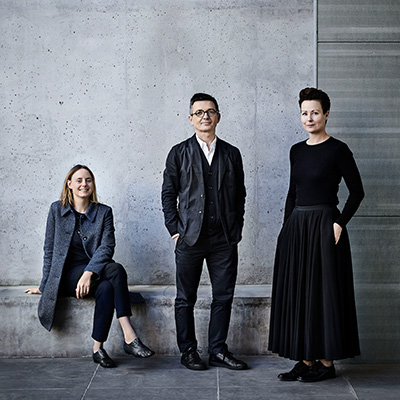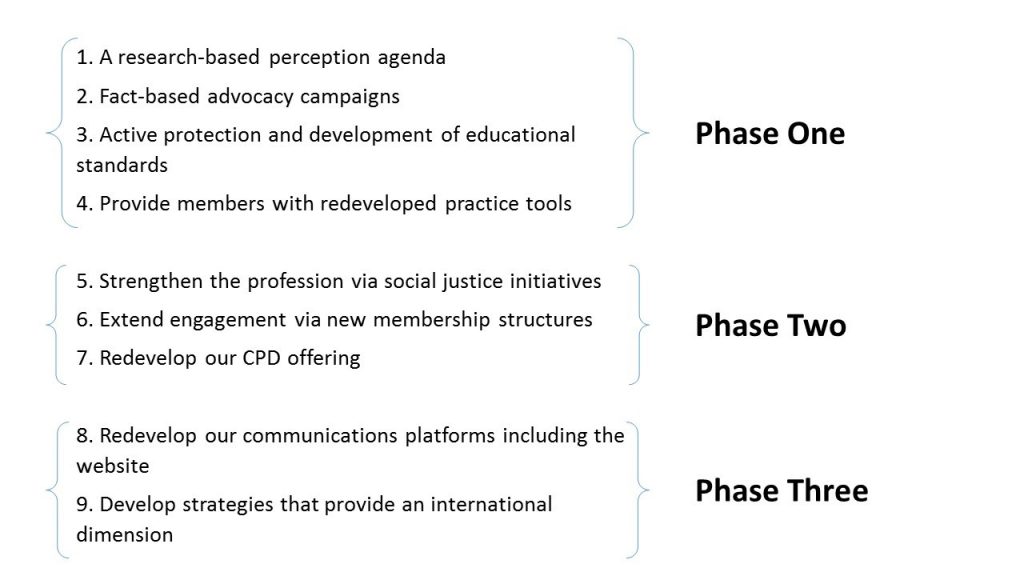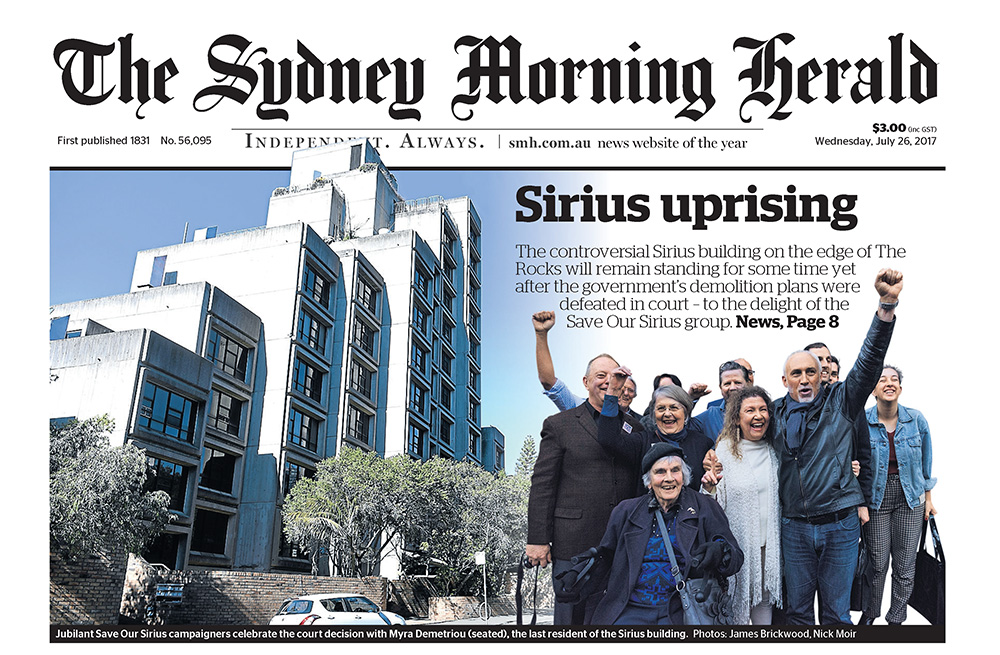Aug 2017
The Institute is continuing to focus on delivering proactive and effective advocacy. We are working through the list of Institute policies that need updating, with ongoing consultation with members to ensure we are dealing with the issues that matter most to members and effectively communicating our messages to governments and the public. New policies can be developed at the instigation of the chapters, national committees and National Council.
Since our last update, we have also advocated at a national and local level on several issues:
NATIONAL
Non-conforming Building Products
Following the Grenfell Tower disaster in London, the Institute made a submission to the Economics References Committee on non-conforming building products, arguing that public safety must come first, with an immediate need for a rolling, nationwide audit of existing buildings for all non-conforming building products – not just cladding. The wide-ranging submission covered the role of architects; importation and sale of materials and products; certification and testing; problems with product substitution; regulating design, documentation and specification; knowledge of codes and standards by all building practitioners; and regulation of building practitioners. The Institute made a number of recommendations, including introducing third party certification regimes from testing laboratories that are properly recognised and accredited by NATA; bringing certification regimes under one umbrella; establishing a national register of approved products with respect to each building class; introducing substantial fines for substitution of compliant with non-compliant building products; mandating the use of appropriate expertise throughout all stages of the design and construction process with special provisions for authorisation of product substitution; and ensuring architects are involved in and appointed to any future inquiry or expert review panel.
Indigenous Housing
The Institute wrote to the Minister for Indigenous Affairs, Nigel Scullion, in relation to the lack of provision in the budget’s forward estimates for funding for remote Indigenous housing beyond the end of June 2018. The letter sought the minister’s assurance that the Commonwealth Government would continue to provide sufficient funding to improve the poor standard of housing for Aboriginal and Torres Strait Islander people across Australia in urban, rural and remote areas.
Australian Government Architect
The Institute also wrote to the Assistant Minister to the Federal Treasurer, Michael Sukkar, to outline the case for the appointment of an Australian Government Architect. The proposal followed talks with Mr Sukkar, particularly in relation to affordable housing outcomes.
BIM and Digital Engineering
The Institute has provided feedback to the National Digital Engineering Working Group (NDEWG) in relation to the architecture profession’s views on the impact of BIM and digital engineering. The Institute commended the NDEWG for producing a broad policy position, not burdened with excessive specificity, but clearly making a case for collaborative digital efforts.
Independent Review into the Future Security of the National Electricity Market
Earlier this year, the Institute provided a submission to the Independent Review into the Future Security of the National Electricity Market, arguing that the building sector offers a great opportunity for more energy productivity gains. The submission supported the five policy solutions outlined in the Australian Sustainable Built Environment Council’s report to drive the transition to a more secure energy future for Australia, namely strong mandatory minimum standards for energy performance of buildings and appliances, targeted incentives and programs, energy market reforms, enabling data, information, research and education measures, and a national plan towards 2050 zero carbon buildings.
BASIX Pilot Stage 1 Consultation
The Institute has also written to the Australian Building Codes Board in regard to the use of BASIX as a proposed Verification Method for incorporation into NCC 2019 during the BASIX Stage 1 pilot. The Institute registered in-principle support for the use of BASIX as a proposed Verification Method, saying Stage 2 of the BASIX Pilot should proceed so that the finer detail of its incorporation could be resolved and to allow wider public consultation on its incorporation.
WESTERN AUSTRALIA
Joint Submission to Inquiry into Government Programs and Projects
The Western Australian Chapter, along with Consult Australia, the Association of Consulting Architects and the Master Builders Association made a joint submission to a WA Commission of Inquiry to highlight procurement related issues, which are consistently encountered on government projects and which continue to remain a barrier to value for money delivery to taxpayers. It contains 23 recommendations, which if implemented in a collaborative way with industry, should ameliorate any ongoing issues and benefit all concerned.
Submission to Review of Architectural Services Panel
WA also took part in a review by Building Management and Works into the way it selects architects to be on its panel to carry out government work. It also looked at how emerging architects are included in the process, how it might be more innovative and whether something can be done to solve issues with fees.
QUEENSLAND
Continuing Professional Development
The Queensland Chapter provided a submission to the state’s Board of Architects, recommending a more flexible CPD system for architects in Queensland, whereby excess points accrued above the minimum 20 points in a 12-month period could be carried over to the next year. It recommended capping the number of additional points at 5. The chapter also suggested aligning the key dates for annual renewal of registration and the date architects are required to report on their CPD activities, to streamline the process and improve administrative manageability.
NEW SOUTH WALES
Greenfield Development
The New South Wales Chapter provided a submission to the State Government’s Review of Complying Development in Greenfield Areas, stating its support for the complying development process through the recently gazetted simplified Housing Code. The chapter has recommended maintaining the Housing Code controls, with additional recommended controls relating to building length and fences.
Unsolicited Proposals
The NSW Chapter has also provided a submission to the State Government in relation to an unsolicited proposal by Macquarie Group for the Martin Place Metro and Station precinct. The chapter has objected to the mechanism that enables such a major development to be put forward for assessment outside the design excellence framework of the City of Sydney Council. It says state significant development at such a key city site and transport node as Martin Place should be undertaken through a tender process following the production of a concept plan, which outlines the options for proponents’ consideration, and that other developers should have had an opportunity to submit proposals on a competitive basis.
AUSTRALIAN CAPITAL TERRITORY
ACT Issues
The ACT Chapter has provided feedback on a number of issues, including Draft Variation No 357– End-of-Trip Facilities General Code (DV357) on changes to the requirements of bicycle parking; a proposed motion in the Legislative Assembly on Housing Demonstration Precinct(s); proposals for Light Rail, Stage Two – City to Woden; and Master Plans for Woden town centre and Mawson group centre.










